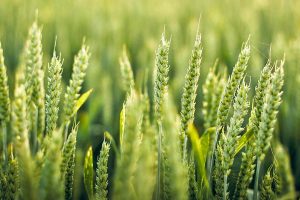- Plant Soil Heath
- 717-299-2112
- info@organicapproach.com
- Organic Approach Website
Why Should I Use Organic Fertilizers?
Proper Tree Care
February 28, 2018Crabgrass Pre-Emergent
March 5, 2018Why Should I Use Organic Fertilizers?

Organic Fertilizers
Organic Fertilizers
To put it simply, the soil we grow our plants in is much more than lifeless “dirt”; it is a dynamic network of living organisms. Just a handful of healthy soil can have billions of microorganisms living within it. It is this microscopic life that determines the overall health of the soil and therefore, the health of all the plants we grow. However, like everything that is living, soil requires a constant source of food to keep it alive and healthy. For soil, the food source is organic matter.
In a forest, the yearly cycle of fallen leaves and needles provides the necessary organic matter to sustain the soil life, but in developed areas the natural sources of organic matter are vastly eliminated. This reduces the soil’s natural food supply, which in turn limits the amount of biological life the soil can sustain. As the soil life is decreased, the availability of many nutritional materials needed by plants is decreased as well. This creates a need for us to supplement our plants with materials to help them grow properly.
The natural progression is to create fertilizers that will promote healthy plants. We study each of the different plants we grow and discover the major nutrients they require to be healthy. Then we produce a fertilizer that supplies those nutrients. Hence the many different varieties of fertilizers for lawns, roses, vegetables, flowers, and shrubs that we find on our store shelves. While it would seem that this would be the end solution to our plant growth problems, the dynamics of the situation goes much further. Take, for example, a typical chemical lawn fertilizer.
After a chemical lawn fertilizer is applied the grass will green up and grow nicely. To the eye, it will seem like we have solved our problem and produced a healthy lawn. But there is a lot more happening that we do not see. The salt content of chemical fertilizers is actually toxic to the tiny biological life in the soil. It is just like pouring salt on a slug and watching it die; only it is occurring on a much smaller scale in the soil. As we continually apply chemical fertilizers, the life in the soil becomes more and more depleted and many subsequent problems begin to appear. In a lawn’s case, the most commonly noticed problems are soil compaction and thatch build-up. These problems put extreme stress on the lawn that fertilizers cannot cure. So the next step is to implement more products and services to fix those problems. This is the start of a never-ending cycle of fixing one problem with materials that lead to yet another problem. This cycle occurs because the original problem of poor soil life was never solved, it was merely covered up.
If we think about it, nature does not produce compacted soil or heavy thatch, man does. If you go to an open field that has been untouched by man, the soil is never compacted and there is never heavy thatch. When the soil life is allowed to flourish, it will tunnel through the soil and aerate it and decompose any thatch as one of its organic food sources. It will do it more deeply and more uniformly than any machine ever will, and it will not charge you to do it. Lawns with healthy soil will never build up thatch and will remain naturally aerated forever.
The examples of hidden side effects can found in every aspect of your landscape as well. Sometimes they are subtle (less blooms than desired) and sometimes they are severe (eventual death of a plant). Very often they are things that go unnoticed to the casual eye. Regardless of the severity, the point is the same; plants need healthy soil to truly be healthy. Unfortunately, achieving healthy soil is not something that can be accomplished instantly. Depending on its condition, it can sometimes take years to bring soil back to good health. But, no matter how far gone the soil is, the path to healthy soil is always the same.
The repetitive use of organic materials will feed the soil life and stimulate the biological activity needed to develop a healthy soil. This is simply an enhancement of nature’s normal process, a process in motion for billions of years. In nature, plants take most of the materials they need from the soil. Chemical fertilizers, on the other hand, feed the plants directly, and that is the where nature’s normal cycle becomes disrupted. To put it in human terms, the process of feeding plants chemically is very similar to feeding ourselves through an IV instead of eating food.
Organic fertilizers consist of naturally occurring materials (such as cocoa shells or rock minerals) that contain the same nutrients we put into our chemical fertilizers, only in a natural form. When we put down organic materials, nature readily recognizes them and starts to decompose them; just as it does leaves in a forest. This encourages a wealth of life in the soil. As the soil life decomposes the natural materials, it releases the nutrients in the materials to the plants. In the end we get the same visual results as with a chemical fertilizer, but we also get the multitude of benefits that come with building a healthy soil with organic Fertilizers.
In fact, when we use products derived from nature, we often find that we get additional benefits we never anticipated. Benefits like reduced disease activity, enhanced and prolonged blooming of plants, and better tasting fruits and vegetables to name just a few. Looking to understand why we get these benefits, experts have recently discovered that plants actually utilize a wealth of natural bacteria and fungi that can only be found in healthy soil. It is believed that the extra benefits we are seeing stem from the reintroduction of these bacteria and fungi into the soil ecosystem. These are substances that no amount of synthetic fertilizer can replace. The only way to produce them is to build a healthy soil.
This is why the use of organic fertilizers has become so important. The use of organic fertilizers enhances the life in the soil, which in turn produces plants that are healthier and more productive. It has taken time, but we have are learned that the key to improving our plants lies within nature itself. The more we try to overpower nature’s normal functions, the more problems we create. Instead, our efforts are shifting to enhancing the normal cycles of nature. By doing so, we are finally beginning to achieve our goals of healthier plants and a healthier environment.
Call Us or Learn more by clicking here.
